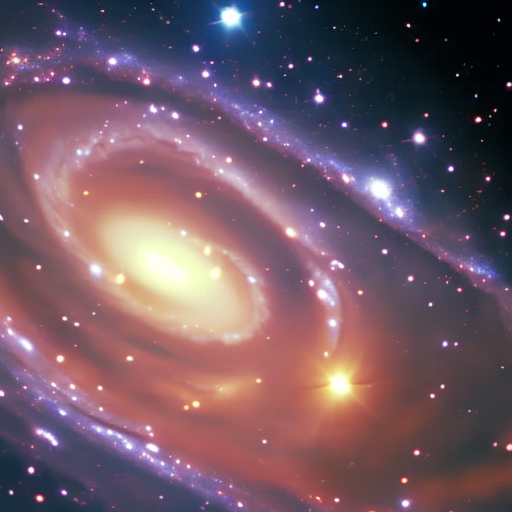Solar Physics: Understanding the Sun’s Behavior and Structure
Solar physics is the branch of astrophysics that focuses on studying the Sun, its behavior, and its structure. It encompasses various sub-disciplines, including solar astronomy, solar magnetism, solar activity, and solar dynamics. By studying the Sun, scientists gain valuable insights into the fundamental processes that drive the behavior of stars and the universe as a whole.
The Structure of the Sun
The Sun is a massive ball of hot, glowing gas that consists mainly of hydrogen and helium. It is composed of several layers, including the core, radiative zone, convective zone, photosphere, chromosphere, and corona.
The core is the central region where nuclear fusion occurs, converting hydrogen into helium and releasing a tremendous amount of energy in the process. Surrounding the core is the radiative zone, where energy is transported through radiation. Above the radiative zone is the convective zone, where energy is transported through the movement of hot plasma.
The photosphere is the visible surface of the Sun and is the layer from which most of the Sun’s light and heat are emitted. Above the photosphere is the chromosphere, a thin layer that emits a reddish glow during solar eclipses. Finally, the outermost layer of the Sun is the corona, a tenuous plasma that extends millions of kilometers into space.
Solar Activity and Sunspots
Solar activity refers to the various phenomena that occur on the Sun, including sunspots, solar flares, and coronal mass ejections (CMEs). Sunspots are dark, cooler regions on the Sun’s surface that are caused by intense magnetic activity. They appear as dark spots because they are cooler than the surrounding areas.
Sunspots are often found in pairs or groups and can last for days or weeks. They are associated with strong magnetic fields that can cause solar flares and CMEs. Solar flares are sudden releases of energy in the form of intense bursts of radiation, while CMEs are massive eruptions of plasma and magnetic fields into space.
Solar Magnetism and the Solar Dynamo
The Sun’s magnetic field plays a crucial role in shaping its behavior and influencing solar activity. The solar dynamo is the process responsible for generating the Sun’s magnetic field. It is believed to be driven by the interaction between the Sun’s rotation and convective motion in its outer layers.
The solar dynamo generates a complex and ever-changing magnetic field, which gives rise to phenomena such as sunspots, solar flares, and CMEs. Understanding the solar dynamo is essential for predicting and understanding solar activity, which can have significant impacts on Earth’s space weather and technological infrastructure.
Solar Physics and Space Weather
Space weather refers to the conditions in space that can affect Earth and its technological systems. Solar physics plays a crucial role in understanding and predicting space weather. Solar flares and CMEs can release large amounts of energy and charged particles into space, which can interact with Earth’s magnetic field and atmosphere.
These interactions can cause geomagnetic storms, which can disrupt satellite communications, power grids, and navigation systems. By studying the Sun and its behavior, scientists can improve their ability to forecast and mitigate the impacts of space weather events on Earth.
Conclusion
Solar physics is a fascinating field of study that aims to unravel the mysteries of the Sun and its impact on the universe. By investigating the Sun’s behavior, structure, and magnetic fields, scientists can gain insights into the fundamental processes that drive stars and the universe as a whole. Furthermore, understanding solar activity and its effects on space weather is crucial for protecting Earth’s technological infrastructure. As our understanding of solar physics continues to advance, we can expect to uncover even more about the Sun’s secrets and its role in shaping the universe.












